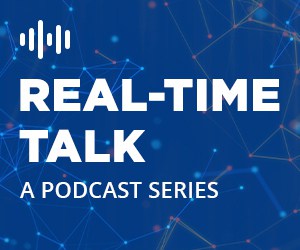
Streamlining sales and customer data eliminates the burden learning and mastering multiple applications — increasing agility and reducing operating expenses.
In an increasingly sophisticated economy where customers are inundated with options, sales forecasting is challenging, and achieving revenue goals is even harder.
Sales teams are constantly trying to identify lucrative target markets, close more deals and shorten sales cycles. Companies must become information-driven by equipping their sales team to be nimble, efficient and knowledgeable to focus on sales opportunities with the highest chance of success. Whether it’s lead generation, ecommerce or direct sales, sales teams need the power of relevant and timely information more than ever.
Access to information isn’t enough to optimize sales
With information in the typical global enterprise scattered across a growing digital landscape, including CRM, ERP and myriad internal and external repositories and applications, harnessing it can be a tremendous challenge. Mere access to this information is pointless if it is not timely and relevant. Successful information-driven organizations have learned how to address this issue, fueling sales productivity and increasing revenues as a result.
[ Related: How an e-retailer employs machine-learning to reduce customer churn ]
Every sales leader, regardless industry, faces these challenges:
- Increase average deal size and drive top line revenue.
- Shorten sales cycles and increase close rates.
- Increase the number of net new customers.
- Capture as much business as possible from existing customers.
- Train new reps to become effective in their new roles as quickly as possible.
While high-performing corporations expect their sales teams to accomplish the following:
- Maximize contract value and increase revenues.
- Make informed strategic decisions.
- Anticipate and respond faster to customer needs.
- Create a thriving business based on thorough understanding of key clients.
- Know what markets to target and who the players are within an organization.
- Fuel higher operational efficiencies.
5 ways information gives you a competitive advantage
With these challenges and expectations in mind, here are five examples of how information-driven sales teams are leveraging modern data analytics technologies to improve their effectiveness and creating distinctive competitive differentiation for their organizations:
- Seamlessly aggregating and integrating all the company’s diverse data repositories toward delivering relevant, real-time information to sales teams around the world.
- Providing a comprehensive view of every customer interaction within their organization from a single access point, even if the basic data is stored in separate systems and databases. This helps maximize contract value by providing sales professionals with the visibility to better understand the customer’s overall needs in order to customize offers and services.
- Delivering unified information at both the contact and company level to enable information-driven sales teams to prioritize where they spend their time and energy to develop better relationships with their prospects. This includes the business drivers of senior leadership, the latest public financial information, changes in key management, buying behaviors relevant to cross-selling other products and more.
- Contextualizing information by product or by territory. Based on a sales group or individual profile, the information is automatically filtered by product and/or territory assignment.
- Enabling easy collaboration and knowledge-sharing uniformly across disparate silos of information. This promotes knowledge transfer among sales reps, helps surface important content, simplifies training and reduces the learning curve as new hires get up to speed quickly.
Optimize sales data for real cost and time savings
Eliminating the need to navigate multiple systems and databases to find information simplifies the sales process and creates a highly productive and efficient environment where sales professionals thrive. This translates to real cost and time savings.
[ Related: Operational Intelligence: The Next Generation of Business Intelligence ]
Take technology vendors, for example, a group that Forrester Research found spends close to 20 percent of their selling, general and administrative (SG&A) costs — more than $135,000 per quota-carrying salesperson — on support-related activities.
By streamlining sales and customer data, information-driven sales organizations eliminate the burden and time consumption of learning, retention and mastery of multiple applications, thereby increasing agility and reducing operating expenses. This creates a critical competitive differentiator as it frees up sales teams to elevate their performance toward maximizing contract values, making informed strategic decisions and responding faster to client needs.






























